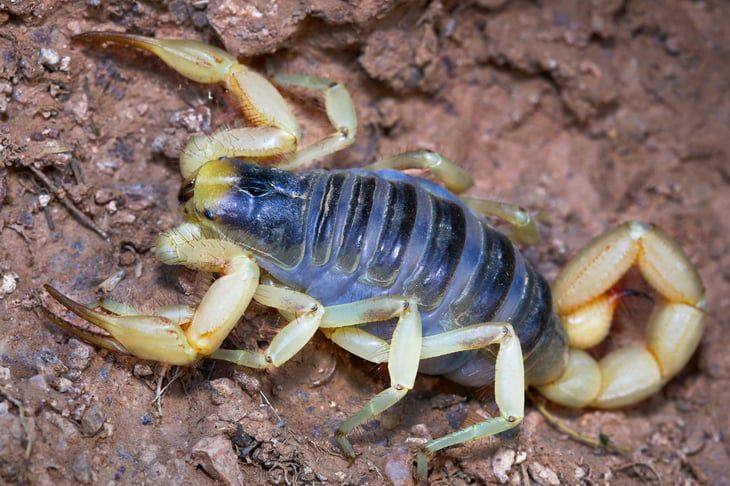
Planning your next vacay in the USA? Be aware that even here there’s wildlife that could stop you in your tracks.
“What? It’s not like I’m trekking through spider-infested Australia or on safari in the wilds of Africa,” you say. “Just hanging out in my homeland! What could go wrong?”
Plenty. While it’s possible to avoid many animal encounters by keeping your eyes open, peril might lurk where you least expect it. Like, say, in your shoe: Scorpions like to hang out in dark areas.
So shake out your shoes and your clothes before putting them on if you’re traveling in the Southwest, as these arachnids’ bites have been known to be fatal. (Fun fact: According to the American Journal of Public Health, scorpion encounters were highest in Phoenix, Arizona, with up to 677 per 100,000 residents. You’re welcome.)
Not every animal in the following list will kill you. You might escape with just discomfort, minor injuries or a story you can dine out on for years.
Or you might not be so lucky. But you can be smart, and alert, to the following wildlife hazards:
1. Stinging insects
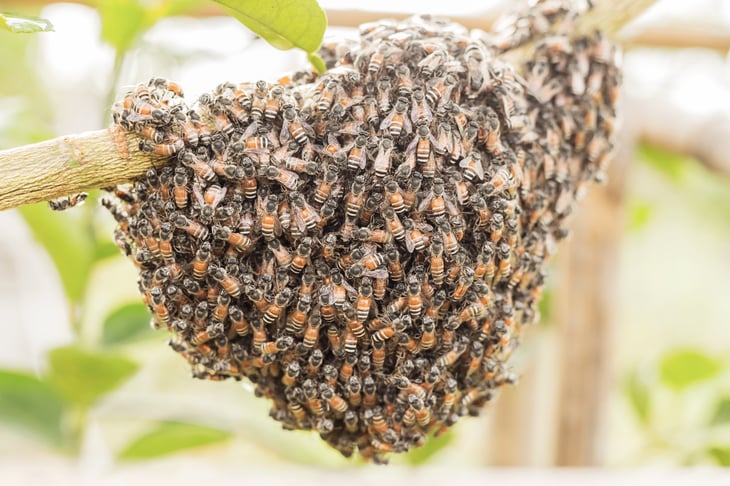
The most consistent U.S. animal killers are also the smallest. According to the CDC, stings from bees, wasps, hornets and fire ants kill anywhere from 90 to 100 people each year due to an allergy-related condition called anaphylactic shock.
Right now you might be thinking, “No problem! I’ve been stung before, and I’m not allergic.” Guess again: It is possible to develop an allergy later in life.
To make things worse, some varieties of wasps and hornets live underground, and you might hike past their front door just as some of them are coming or going. Probably the worst way to get stung, though, is when you didn’t notice that a yellowjacket has crawled into your soft-drink can. Ouch.
It may not be possible to avoid stinging insects entirely, especially if you’re hiking in areas with lots of flowers (including clover). Avoid brightly colored or floral-printed clothing (they can attract bees), don’t wear loose clothing (ever had a bee fly up your pant leg or shirt sleeve?), and opt for shoes rather than sandals.
If bees or wasps fly near you, slowly move away. Don’t swat at or try to shoo the insects, as this can trigger them to sting. And if you are stung, move away as quickly as you can; that’s because when an insect stings, it releases a chemical that calls other insects to the area.
2. Fire ants
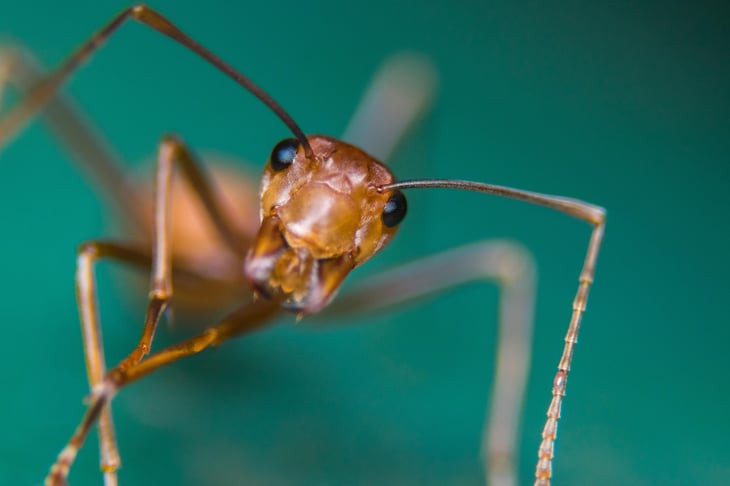
Yes, the CDC groups these along with other stinging insects. But we think they’re horrific enough to be classed separately from bees, wasps and hornets.
Getting stung by an insect is bad enough. Getting stung by dozens (or hundreds) of them — fire ants love to bite with their besties — is not only painful, but potentially lethal. Experts estimate that 1 to 6 percent of people who are stung have severe reactions; however, it can take up to an hour for the reaction to develop.
Some indigenous varieties of fire ants live in the U.S., but the Red Imported Fire Ant is the one that makes people nervous. A relative newcomer (70-plus years, more or less) and a major pest, RIFA reproduces quickly, swarms aggressively and bites painfully.
The species has been known to invade houses and even nursing homes (where sting-related deaths have been reported), but generally the critters are outdoor mound-builders. Although some mounds will reach 18 inches or more in height, those established in grassy areas will be only a few inches high; they look like piles of fluffy soil but without the center openings typical to most ant mounds (fire ants enter via underground tunnels).
Fire ants have been found occasionally in Kentucky, Missouri and Maryland, and are well-established in Alabama, Arkansas, California, Florida, Georgia, Louisiana, Mississippi, New Mexico, North Carolina, Oklahoma, South Carolina, Tennessee, Texas and Virginia.
If you’re hiking in these areas, watch where you step. And if you’re camping, be careful where you pitch your tent.
3. Mosquitoes
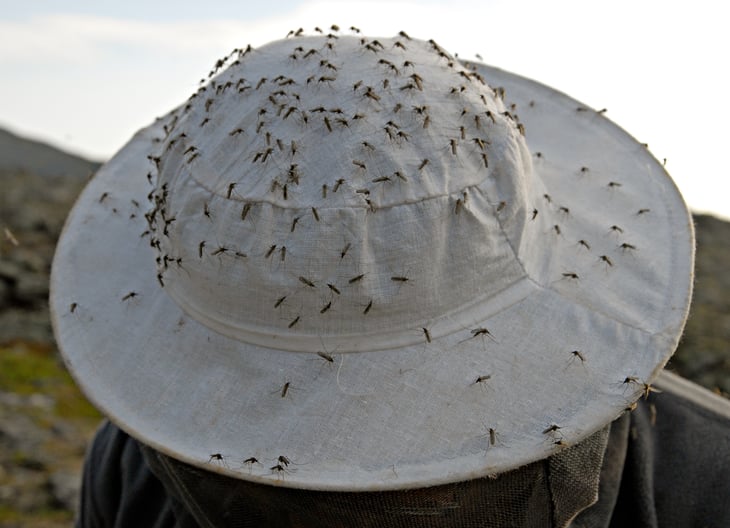
Sensing a pattern here? Sometimes the smaller critters can ruin your day — or worse.
One of the worst are mosquitoes. These irritating insects live just about everywhere. In fact, the Centers for Disease Control and Prevention website notes that “almost everyone in the world has been bitten by a mosquito.”
Sometimes the result is more than just an itchy spot. Most of the viruses spread by skeeters that suck infected animals’ blood have neither vaccines nor medication for treatment. That’s why people panicked during the West Nile, chikungunya and Zika virus epidemics.
However, those highly publicized illnesses aren’t the only ways mosquitoes can make you sick. Lesser-known viruses can cause illnesses like La Crosse encephalitis, dengue fever and St. Louis encephalitis.
Always wear mosquito repellent. If you can, buy mosquito-repelling clothing (available on Amazon and through stores like Duluth Trading Co. and Dick’s Sporting Goods). Should you develop headache, fever, rash muscle and joint pain after a bite, see a doctor and explain where you were when you got bitten.
And in the “adding insult to injury” department, here’s additional advice from the CDC: Once you’re back home, work hard to keep mosquitoes away for at least three weeks. Otherwise you might pass your mosquito-borne virus to the local mosquito population. #blamethevictim
Check out: “7 Cheap Ways to Avoid Mosquitoes.”
4. Cougars

Nope, not the “attractive woman of a certain age” kind. We’re talking pumas, catamounts, panthers, mountain lions or whatever they’re called in whichever neck of the woods you’re visiting.
Which is a lot of places, actually: Although they’re primarily associated with California and other Western states, cougars have been sighted in Indiana, Connecticut, Illinois (including Chicago), Kentucky, Tennessee and New York.
These animals don’t usually hunt humans. But as suburbs encroach on habitat, and people explore the wilderness, big cat-human encounters are not as rare as they once were. The most recent example occurred in mid-May, when two bicyclists were attacked by a cougar in broad daylight 30 miles outside Seattle. One of the cyclists died, and the other was badly mauled.
If you see a cougar, experts suggest that you shout, throw rocks and wave your arms. Try to look bigger than you are: Hold a backpack or something else over your head, and stand close to others in your group. Do not run, as this triggers the chase instinct.
And if the animal attacks anyway? Fight as hard as you can, working to stay on your feet. According to the Washington Department of Fish and Wildlife, cougars have been driven away when people fight back.
5. Snakes
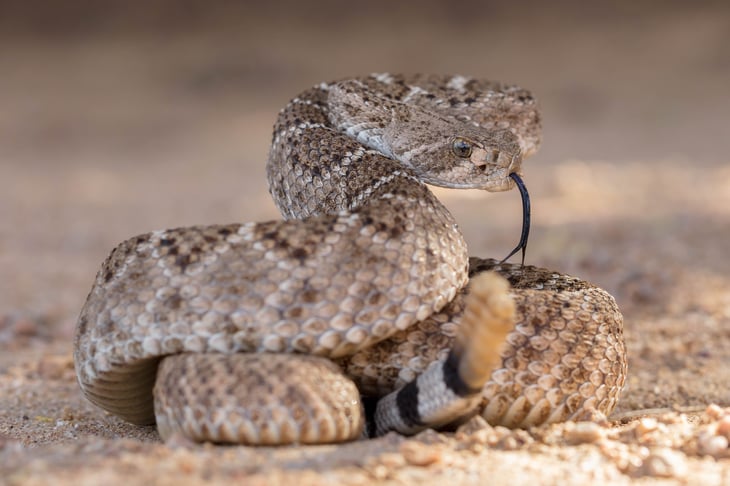
According to the CDC, between 7,000 and 8,000 people are bitten by venomous snakes every year in the U.S. The good news: Only about five people a year die from these bites.
The bad news: A snake bite really, really hurts.
The reason more people don’t die is because they head to the hospital, which is what you should do if you are bitten. Venomous snakes are found in almost every state, and while they generally avoid the limelight, human-serpent encounters happen.
One way to avoid snakes is to avoid areas where they’re known to live. Generally that’s easy enough, but not always. For example, a 2016 news report noted that a “record number of rattlesnakes” were showing up in Los Angeles yards due to drought conditions.
According to the American Hiking Society, you should choose open trails versus bushwhacking through thick vegetation and/or loose rocks. Since snakes are particularly active at night, maybe you should nix the idea of a moonlit stroll.
6. Alligators
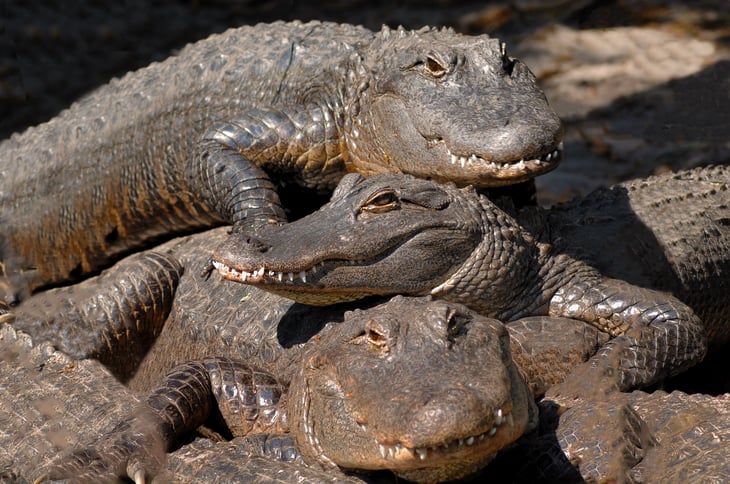
In early June, a 47-year-old woman from Plantation, Florida, went out to walk her dogs and never came back. The alligator that attacked her was positively identified (think: stomach contents) and killed. And who can forget the 2-year-old killed by an alligator at Disney World’s Seven Seas Lagoon?
These leathery reptiles attack and injure or kill people every year. For example, since 2008 the Florida Fish and Wildlife Conservation Commission has received an average of almost 16,000 complaints annually. In alligator country, it’s safest to assume that any fresh or brackish water could be dangerous. But you might also encounter the animals anywhere from a golf course to your backyard.
These animals are known to be dangerous, yet we still keep hearing about people who ignore the risk. Back in summer 2015, for example, a 28-year-old guy “mocked” the alligators in a bayou near Orange, Texas, before jumping in — and dying.
Didn’t know that alligators live in Texas? They do. They also live in Louisiana, Alabama, Arkansas, Oklahoma, South and North Carolina, Mississippi, Georgia and, of course, Florida.
If your vacation plans are taking you anywhere near those places, stay on guard — and, maybe, stay out of the water. And speaking of water …
7. Sharks

According to the yearly worldwide shark attack summary from the International Shark Attack File (yes, that’s a thing), the United States is a world leader in these potentially deadly encounters. In 2017, our country saw 53 attacks. No one died, but you can bet the 53 victims were mightily inconvenienced.
This is actually a decrease from 2016, when 56 encounters were reported. Even so, the U.S. provides the raw material for more than 60 percent of shark attacks worldwide.
You’re most likely to get hurt in Florida, which has been shark central for some time now; last year, 31 of those 53 attacks occurred there.
Planning to surf, paddleboard, snorkel or even just go to the beach in the Sunshine State? Weigh the odds, observe safety precautions, and, if you’re in an area where sharks are common, decide whether the risk is really worth it.
8. Bears

According to the CDC, bears kill an average of one person per year. But you don’t have to be killed by a bear to have your vacation short-circuited. (More on that in a minute.)
Generally speaking, bears don’t hunt humans. In fact, they generally do their best to stay away from us. However, exceptions do occur, especially if you surprise a bear (especially one with cubs) or accidentally get too close to where it’s been feeding. After a hiker went missing in mid-June in Eagle River, Alaska, a member of a search party was attacked by a grizzly; the body of the missing man, who had been mauled, was found nearby.
While this happened in a forested area, it’s worth noting that Eagle River is part of the municipality of Anchorage, a city with almost 300,000 residents. Anchorage has both black and grizzly bears living within its city limits, and they don’t always stay in the woods. Bruins have been known to wander through parks, shopping center parking lots, school playgrounds and even downtown (which makes for fun video but potentially dangerous encounters).
They infest backyards, too: Anchorage resident Becky Moore had five black bears on her property one day. She shot this video, which was shared by local television station KTUU.
If you’re planning to travel in bear country, acquaint yourself with avoidance tactics and also learn what to do if an attack is imminent. It’s complicated, so we’re going to suggest you read what the National Parks Service has to say on the subject.
Incidentally, bears could pop up where you least expect them. As an example, New Jersey has the highest human population density in the country, yet bears have been seen in every county in the Garden State.
9. Deer
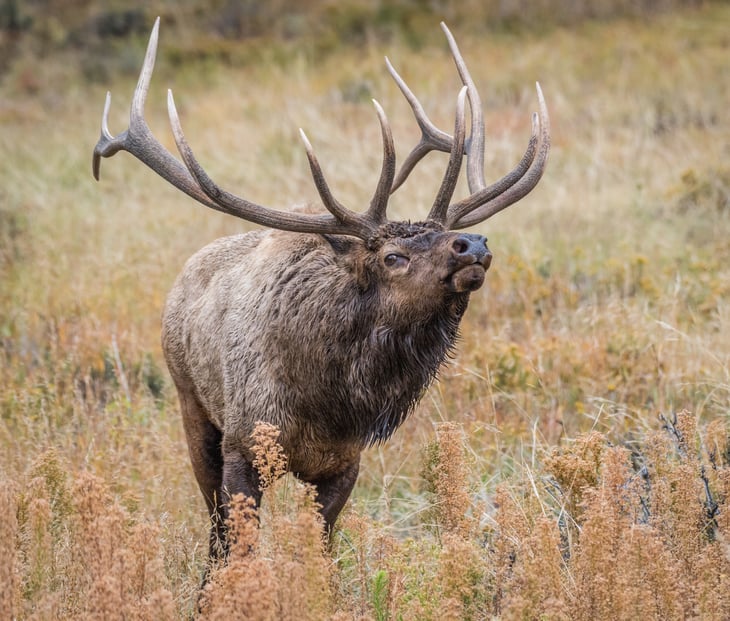
We’re not just talking deer-involved auto accidents. The animals do attack humans, sometimes with deadly results.
This is especially likely to happen during the fall rutting season, when the males of the species become a bit, uh, testy. A spate of deer-human tussles, including a fatal one, occurred in Southern California back in autumn 2005.
Hunters need to be careful, too; a French hunter died in November 2017 after being gored by a cornered deer some 50 miles outside Paris.
So if you’re planning to hike and/or hunt in deer territory, remember that Bambi isn’t necessarily a pacifist. Deer generally will avoid humans, but if you surprise one there’s no telling how it will react, especially if it’s protecting its territory or its young. Should the animal notice you and change its posture or stamp its feet, back away slowly.
If it approaches, hold a backpack or coat over your head to appear larger; shout and make other noises as you back away. Try and get something between you and the deer if it charges, or climb a tree or rock. Curl up in a fetal position and protect your head if you’re knocked down.
Note: Avoiding deer areas during the fall rutting season isn’t foolproof, since some animals don’t mate according to schedule. An 80-year-old Montana man was attacked by a buck in August 2004, suffering a broken rib and injuries that made him look “like he was in a bar fight,” according to a state game warden. Wonder how the deer looked?
10. Moose
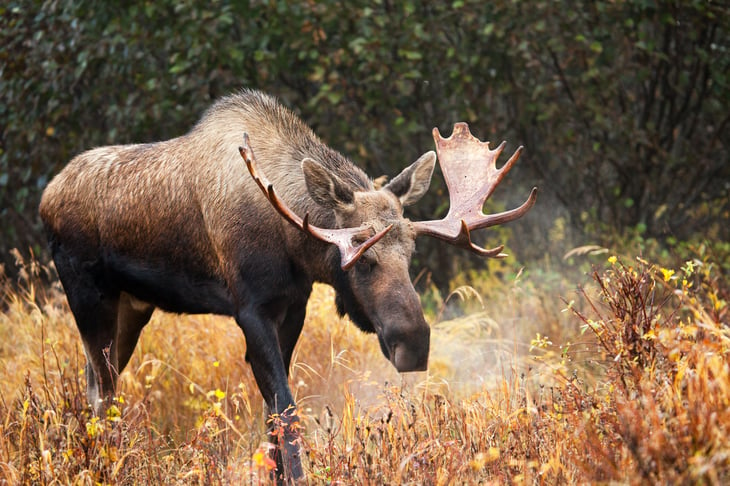
Technically moose are deer — the largest member of the deer family, in fact. But we think they deserve their own category because they menace humans fairly regularly in at least one state: Residents of Alaska’s towns and cities don’t always co-exist easily with Alces alces.
Moose can actually be found in more than a dozen states. There have been documented cases of moose knocking down and/or trampling runners, skiers and even children. A man was stomped to death by a moose on the University of Alaska Anchorage campus in 1995.
In early June 2017, Alaska wildlife officials shot a cow moose after it attacked four different residents of — you guessed it — Eagle River. One of them, a 48-year-old woman, wound up in the intensive care unit with broken ribs and a punctured lung.
Bullwinkle looks big, dumb and gentle. But moose can turn from docile to deadly in a flash. These animals can weigh up to 1,200 pounds and can run as fast as 30 miles per hour. The UAA campus police website offers these survival tips:
- If a moose stops eating and looks at you, that’s considered a sign of aggression. So is the ungulate’s laying back its ears, raising the hair on its hump, licking its lips or clicking its teeth.
- Should the animal lower its head and start walking toward you, find something to get behind (a tree, a wall, a vehicle). If possible, get into a car or enter a building.
- If knocked down, curl up in a fetal position and cover your head with your arms. Don’t get up again until the animal has moved a good distance away.
For maximum safety, keep your distance. As in, view the animals from afar or from the inside of a building or vehicle.
What’s your biggest vacation fear, critter-wise? Share with us in the comments section below or on our Facebook page.




Add a Comment
Our Policy: We welcome relevant and respectful comments in order to foster healthy and informative discussions. All other comments may be removed. Comments with links are automatically held for moderation.